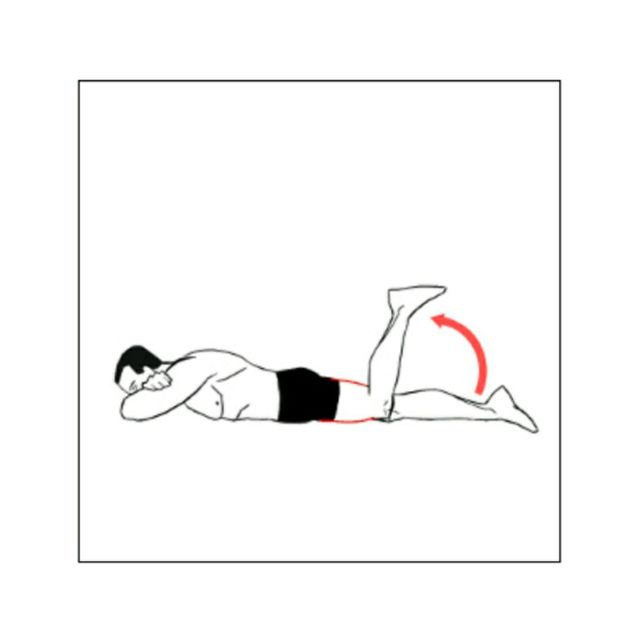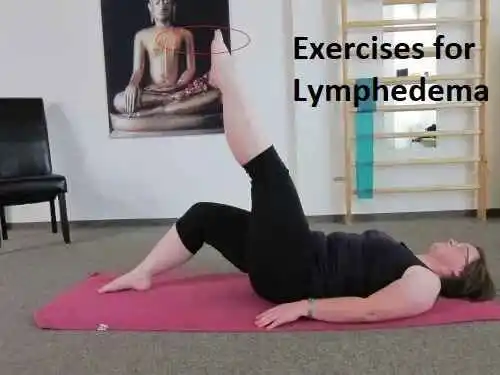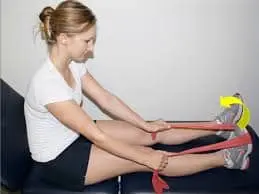Knee Joint Range of Motion Exercise
What is the Knee range of motion exercise?
Exercises that increase the range of motion in the knee joint can be done passively, actively, or with active assistance.
Types of Knee range-of-motion exercises.
- Passive range of motion
- Active-assisted range of motion: When it comes to the knee joint, the patient’s own effort and the outside force may be applied in equal measure.
- Active range of motion: The final one is an active range of motion, which is the patient’s complete control over the knee joint’s mobility throughout the exercise.
The knee joint
The knee is the largest joint in the body and one of the most vital. When it comes to action involving bearing the weight of the body in vertical (jumping) and horizontal (running and walking) directions, it is crucial.
Additionally, it permits limited lateral rotation when the knee is “unlocked” and flexed, as well as medial rotation when the knee is flexed and at the final stage of extension.
What Is a Goniometer?
The goniometer is positioned next to the knee joint, and the angular distance on the instrument is read by glancing at the numbers. The goniometer is most frequently used by physical therapists to test knee range of motion. The physical therapist can use the goniometer to measure the patient’s range of motion at the initial assessment if they have a limited range of motion in their knee joint. Subsequently, the goniometer can be used to ensure that the intervention is effective.
Types of Goniometers
Although there are many different kinds of goniometers available, the universal goniometer is the most commonly used kind.
Universal Goniometer
Inclinometer/gravity goniometer
Smartphone/Software-Based Goniometer
Using a smartphone as a digital goniometer has several advantages, including portability, simplicity of usage, application-based tracking of the data, and one-handed operation.
Arthrodial Goniometer
Cervical rotation, anteroposterior flexion, and lateral flexion can all be measured with this kind of goniometer.
Twin axis electrogoniometer
The electrogoniometer has better intra- and inter-rater reliability than a universal goniometer, but it is more difficult to use in clinical patient evaluations; as a result, it is more frequently utilized in research settings.
Techniques for using a goniometer
When measuring the knee range using a goniometer, only one notation scheme may be used.
- Adjust and stabilize the knee joint appropriately
- Go through the knee’s proper range of motion (ROM) for the affected body part.
- After that, palpate the relevant skeletal markers.
- Align the goniometer with the landmarks on the knee.
- Accurately read the measuring device.
- Make accurate measurements (measure and record the knee’s active and passive range of motion, respectively).
Movements of the knee joint
- Flexion of the knee: Knee flexion is the action of bending the knee and placing the foot up against the back of the thigh.
- Extension of the knee
Anatomical motion: Flexion of the knee
- Axis location: the femur’s lateral epicondyle
- Anticipated Results.
- Placement of the Goniometer
Knee extension
- Placement of the Goniometer
- Axis location: the femur’s lateral epicondyle
- Stationary arm: stretching from the femur to the greater trochanter.
Passive range of motion exercise
When an accident or even a paralysis attack renders the knee joints immobile, the passive range of motion exercise is incredibly helpful. To encourage a quicker recovery of the stiff or flaccid knee joint, therapeutic stretching activities are typically coupled with passive range of motion exercises. Here, the medical professional stretches the knee’s soft tissue to release tension and relax the nearby muscles. The immobilized knee joint experiences less stiffness, rigidity, or even flaccidity thanks to the passive range of motion exercises.
Using a stretching strap is the most popular method for performing this workout. It is more advantageous to perform the passive range of motion (PROM) exercises with the assistance of a therapist. In order to increase muscle flexibility, a qualified practitioner does this kind of exercise by both moving the body into the stretch and holding it there.
First, a therapist is someone who knows when and how to set appropriate boundaries.
The second is that the clinician is aware of how long to maintain the stretch.
Finally, in order to maximize benefits, therapists are taught to determine whether they are focusing on the right locations. Considering that in the mind.
Exercises involving a passive range of motion are usually administered in cases of paralysis attacks, comatose patients, mending fractures, and even when pain is triggered during active muscular contraction. It’s important to keep in mind, though, that passive range-of-motion exercises are unable to stop muscle atrophy.
Advantages
In addition to aiding in the promotion of healthy joint functionality, passive range of motion exercise helps patients reduce pain, speed up the healing process, maintain and restore the range of motion in knee joints that are injured, gain muscle mass, improve blood flow, and raise oxygen levels.
Suggestions
- When executing a knee movement, always maintain the leg’s weight.
- Continue moving smoothly and slowly.
- If the knee joint or muscle is stiff, don’t push yourself through the motion.
- The physical therapist ought to limit their movements to what the knee joint or muscle will allow.
- If the knee motions hurt during the passive range of motion, stop and notify a physical therapist.
Passive range of motion exercise
- Passive knee flexion in prone
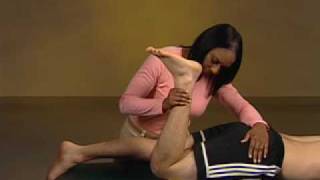
The patient should be instructed to lie in a comfortable position, such as prone, by the therapist first. Subsequently, the therapist held the ankle joint with one hand while placing the other on the back of the thigh. The patient should attempt to assist in bending the knee at that point, as this will help to strengthen the muscles. Perform ten rounds in a session. Work out three times a day.
- Passive knee extension in prone
A physical therapist should first instruct a patient to lie in a comfortable position, such as prone with their knees bent. This helps strengthen the knee extensors, thus the patient should also try to assist in straightening the knee during this time. In one session, perform ten repetitions. Work out three times a day.
- Passive knee flexion in supine
Next, a medical professional applies pressure to the front of the thigh with one hand while holding the ankle joint with the other. Subsequently, a physical therapist bends the hip and knee in the direction of the face. At that point, when the physical therapist moves a leg, the patient should attempt to assist in bending the hip and knee as well, as this aids in strengthening the knee flexors. For five seconds, a physical therapist holds the affected leg at the endpoint. In one session, perform ten repetitions. Work out three times a day.
- Passive knee extension in supine
The therapist should first instruct the patient to lie down in a comfortable position, such as a supine position with their knees bent. The physical therapist next straightens the knee, which means that it is facing away from the face. At this point, the patient should attempt to aid in straightening the knee as well, since this helps to strengthen the knee extensors. Perform ten rounds in a session. Work out three times a day.
Active-assisted range of motion exercise
As the name implies, patients can perform these exercises with some assistance from the physical therapist, from themselves, or by using a band or strap. The patient does the majority of the movements but receives minimal assistance in doing the knee movement appropriately.
These limited knee movements are typically the consequence of weakness or pain from falls, bruises, accidents, or more serious injuries in the majority of cases. When beginning these exercises for the knee joint, a patient may experience severe pain and weakness.
The knee active-assisted range of motion exercise has several advantages.
- Enhance the knee joint’s range of motion.
- Improve the lower limb’s overall and knee joint’s functionality.
- Increase your level of functional independence.
- Reduce pain in the knees.
- Both preserve and enhance the integrity of the knee joint.
What is the first step for a patient?
The patient’s home health therapist can teach you the knee joint’s active-assisted range of motion activities. With the help of the patient’s home health therapist, perform the exercises. A patient may receive instruction from a physical therapist regarding proper handholds and assistance requirements. In order to prevent injury or exhaustion, the therapist may also demonstrate the simplest technique to perform each exercise. The majority of patients would rather exercise while supported in bed.
Perform all knee ROM exercises carefully, evenly, and slowly. Avoid overstretching or jerking the knee muscles. Rather than being helpful, this could injure the joint or muscle. At this stage, a patient’s ability to bend a joint is limited.
Request that the patient’s physical therapist promptly inform them if they have reduced pain or persistent soreness following cessation of exercise. Exercises that increase knee range of motion may produce moderate pain, but these should also pass fast. To lessen the pain associated with the exercise, try performing all of these exercises again while adjusting the physical therapist’s level of support.
Active-assisted range of motion exercise
- Active-assisted knee flexion in prone
A physical therapist should first instruct a patient to lie down in a comfortable posture, such as prone. Next, a physical therapist directs the patient to bend their knee toward their face; however, the therapist will assist the patient in completing the full range of motion once the patient stops bending the knee. In one session, perform ten repetitions. Work out three times a day.
- Active-assisted knee extension in prone
The therapist first instructs the patient to lie down in a comfortable position, such as prone with their knees bent. The patient is then instructed to straighten their knee, which means to move away from their face. Perform ten rounds in a session. Work out three times a day.
- Active-assisted knee flexion in supine
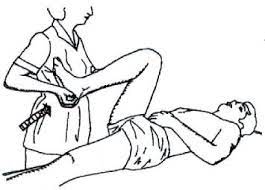
The patient is then instructed by the physical therapist to bend both their knee and hip in the direction of their face. Perform ten rounds in a session. Work out three times a day.
- Active-assisted knee flexion
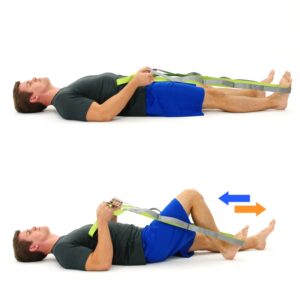
The patient should then roll a strap onto their foot and hold both ends of the strap in place. If the patient is not able to achieve the whole range of motion, they are then instructed to pull the strap towards their body side and accomplish the full range of knee flexion. In one session, perform ten repetitions. Work out three times a day.
- Active-assisted knee flexion in prone
The therapist first instructs the patient to lie down in a posture that is comfortable for them, such as prone. Subsequently, the patient should roll the strap on their foot and grab both ends of the strap while lying down. Perform ten rounds in a session. Work out three times a day.
Active range of motion exercise
What is the active range of motion exercises?
The patient can use these exercises to fully extend the range of motion in their knee joint. Exercise can help maintain the knee joints’ flexibility, lessen pain, and enhance strength and balance.
Before a patient does the exercises on their own, they should be practiced with a healthcare professional. Do knee exercises daily, or as often as your healthcare provider prescribes. Perform the same sequence of knee joint exercises each day.
Proceed smoothly, slowly, and gently. Avert sudden or abrupt movements. If the patient is in agony, stop. It is quite typical to have some initial pain when doing the action.
Active range of motion exercise
- Active knee flexion in prone
The patient is then instructed by the therapist to bend their knee as far as they can without stopping at the endpoint. Perform ten rounds in a session. Work out three times a day.
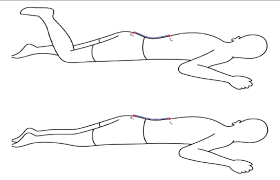
- Active knee extension in prone
A physical therapist should first instruct a patient who assumes a comfortable position, such as prone. The patient is then instructed by a physical therapist to straighten their knee as much as they can, although they are not required to maintain this position at the goal. In one session, perform ten repetitions. Work out three times a day.
- Active knee flexion in supine
Next, a patient receives an instruction from a physical therapist to bend their knee as much as they can with their hips, without holding at the endpoint. In one session, perform ten repetitions. Work out three times a day.
- Active knee extension in supine
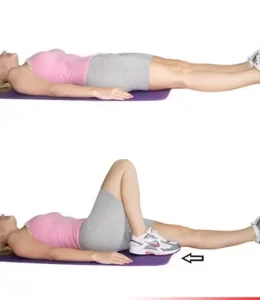
The therapist should instruct the patient to lie down in a comfortable posture before beginning. The patient is then instructed by the therapist to straighten their hip and knee as well, but they are not required to maintain this position at the finish. Perform ten rounds in a session. Work out three times a day.
- Active knee flexion in high-sitting
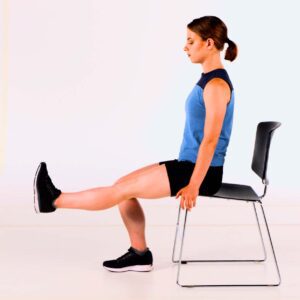
The patient should be instructed to take a comfortable position, like high sitting, by the physical therapist first. The patient is then instructed by the physical therapist to bend their knee as much as they can, although they are not required to maintain this posture at the finish. Perform ten rounds in a session. Work out three times a day.
- Active knee extension in high-sitting
A physical therapist should instruct a patient to get into a comfortable position before beginning, such as elevated sitting. Perform ten rounds in a single session. In one day, complete three sessions.
FAQs
What exercise program is best for persons who have tight knees?
Strength, flexibility, and range of motion can all be enhanced by biking yoga. Yoga is great for increasing flexibility, particularly in the potentially tight areas surrounding the knee.
Walking.
How can you extend the range of motion in your knees?
If your knee is not totally straight, try this exercise.
Let your knee extend straight.
Repeat multiple times daily.
What size knee joint is typical?
In a narrow and constricted medial joint compartment, forceful instrumentation may damage the articular cartilage, raising the risk of arthritis down the road.
Which angle gives the strongest knee?
The dynamometer’s axis aligned with the axis of motion, and measurements were taken at joint angles of 25° and 67° to investigate variations in maximal muscle strength.
How does the range of motion test get done?
Goniometers, which come in various sizes and shapes to accommodate the various joints in the human body, display angles in degrees from zero to 180 or 360 degrees.
What angle of the knee is ideal?
Men will usually be around 141°, while women may be 1-2° higher. The reason for the variation is that women’s hamstrings are looser, which permits the knee to extend farther. Many find that a knee angle of less than 140° may be more comfortable for them since tight hamstrings will prevent the knee from fully extending.
What constitutes a knee that functions normally?
Knee Joint: Anatomy & Function
Your knees enable your legs to bend and move while supporting some of your weight. Your knees are necessary for almost every leg-based movement, including walking, running, and jumping. An effective form of exercise for those who have knee pain is water aerobics.
What is the typical knee bend?
Contrary to popular belief, a person’s range of motion (ROM) should not exceed 140 degrees. This is because most people have some hyperextension, which causes their ROM to be negative.
What is an abnormal knee range of motion?
This might be best described as having a restricted range of knee extension, both actively and passively.
What results in knee range of motion loss?
Another common cause of restricted range of motion is meniscal tears, especially in the medial or lateral knee menisci. Degenerative alterations or trauma are two possible causes of these injuries.
Do knee ROM workouts exist?
For ten seconds, hold this posture. Slowly stretch your knee straight in reverse, then repeat.
How can the range of motion in my knees be improved?
In conclusion, after an injury or surgery, it is advised that you try to regain your entire range of motion for knee flexion by putting your heel to your butt or as close to it as feasible. You can do heel slides for ten to fifteen repetitions or spend five to ten minutes on a stationary bike early on.
References
- Prajapati, N. (2022e, May 19). Knee Range of motion exercise: Passive, Active & Active assisted exercise. Samarpan Physiotherapy Clinic. https://samarpanphysioclinic.com/knee-range-of-motion-exercise/

